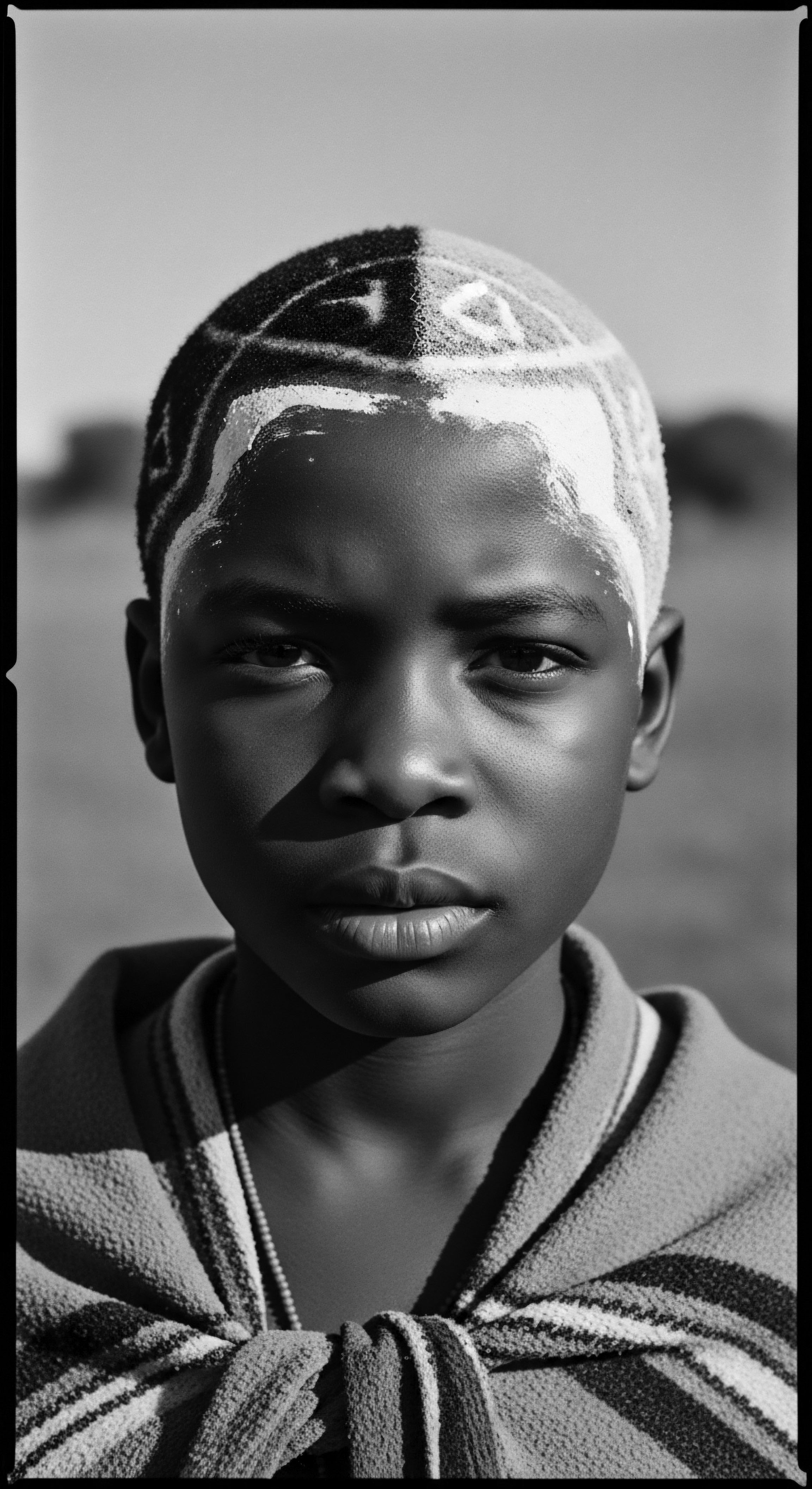
Fundamentals
The concept of “Beauty Standards” encompasses the collective societal ideals that dictate what is considered attractive or desirable within a given culture or community. These standards are not static; they shift across eras, geographies, and social strata, often reflecting prevailing power dynamics, economic conditions, and cultural values. Far from being merely superficial preferences, beauty standards profoundly influence self-perception, social acceptance, and even economic opportunities. They are, in essence, a complex interplay of aesthetic preferences, social norms, and historical conditioning that shape how individuals perceive themselves and others.
For Roothea, an exploration of Beauty Standards necessitates a grounding in the foundational understanding of how these ideals have historically intersected with, and often sought to diminish, the inherent beauty of textured hair. This journey reveals that what is deemed “beautiful” has rarely been a universal, objective truth, particularly for those whose hair defies Eurocentric norms. Understanding this initial meaning helps to contextualize the deep-seated biases that have historically marginalized textured hair, positioning it outside mainstream definitions of attractiveness.
Within the context of textured hair heritage, the meaning of beauty standards takes on a layered significance. It moves beyond a simple definition of aesthetic preference to become a narrative of resilience, a testament to the enduring spirit of communities who, despite systemic pressures, continued to honor their ancestral hair traditions. This foundational perspective acknowledges that beauty standards, for Black and mixed-race individuals, have often been instruments of control, yet simultaneously, catalysts for self-determination and cultural affirmation.
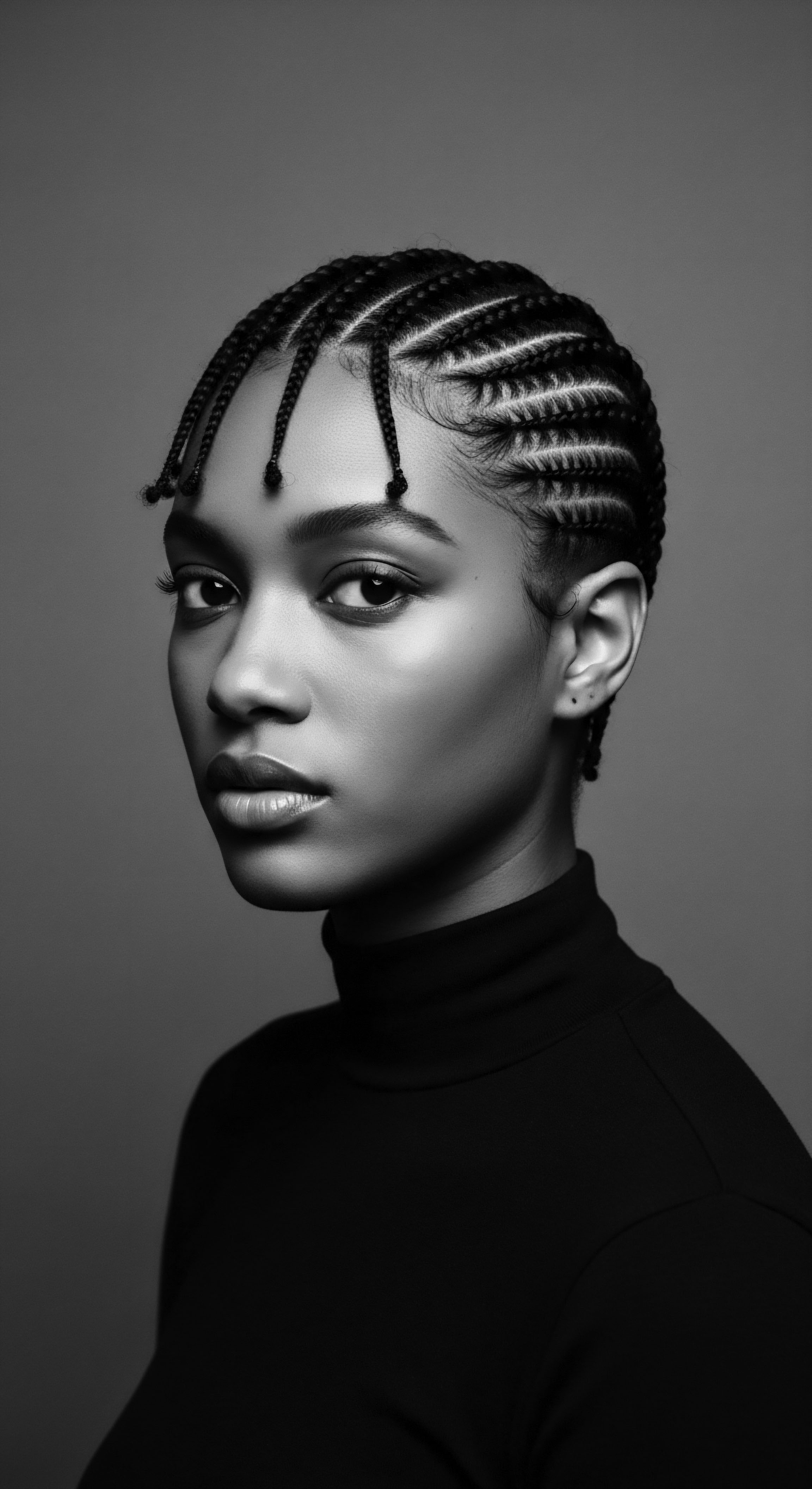
The Earliest Echoes of Adornment
Long before the imposition of rigid, exclusionary standards, hair served as a profound canvas for identity and social communication across various African societies. In pre-colonial Africa, hair styling was a sophisticated art form, conveying intricate details about a person’s age, marital status, tribal affiliation, wealth, and spiritual beliefs. Intricate cornrows, elaborate braids, and distinctive locs were not merely decorative; they were living documents, each pattern telling a story of lineage and community. Natural butters, herbs, and powders were integral to hair care rituals, prioritizing moisture retention and scalp health, reflecting an elemental connection to the earth and its offerings.
For textured hair, Beauty Standards are not just about appearance; they represent a historical battleground where cultural identity and ancestral practices have consistently sought to reclaim their rightful place.
This historical backdrop is vital for comprehending the true meaning of beauty standards in the Roothea lexicon. It highlights an original, unadulterated appreciation for textured hair in its myriad forms, where its natural state was revered and celebrated, rather than subjected to external judgment or modification. The very concept of hair as a spiritual conduit, connecting individuals to ancestors and deities, underscores a deeply holistic view of beauty, far removed from the later, more restrictive definitions.

Hair as a Social Ledger in Ancient Africa
In many West African communities, for instance, a person’s braided style could make a statement far beyond mere fashion. The more important an individual’s status within the community, the more elaborate and time-consuming their braided style often appeared. This communal aspect of hair styling, often involving family members sharing wisdom and stories, reinforced social bonds and ensured the transmission of cultural traditions across generations.
- Cornrows ❉ Often indicated family lineage and status, with patterns carrying specific meanings across different ethnic groups.
- Locs ❉ Revered by tribes like the Maasai in Kenya and Tanzania, signifying spiritual connection and adherence to ancestral practices.
- Bantu Knots ❉ Popularized by the Zulu Tribe of South Africa, these intricate coiled styles served both protective and aesthetic purposes.
These practices reveal a profound understanding of hair as an extension of self and community, where its care was a ritual, and its styling a form of communication. The definition of beauty, in these contexts, was intrinsically tied to authenticity, cultural belonging, and the visible expression of one’s place within the collective.
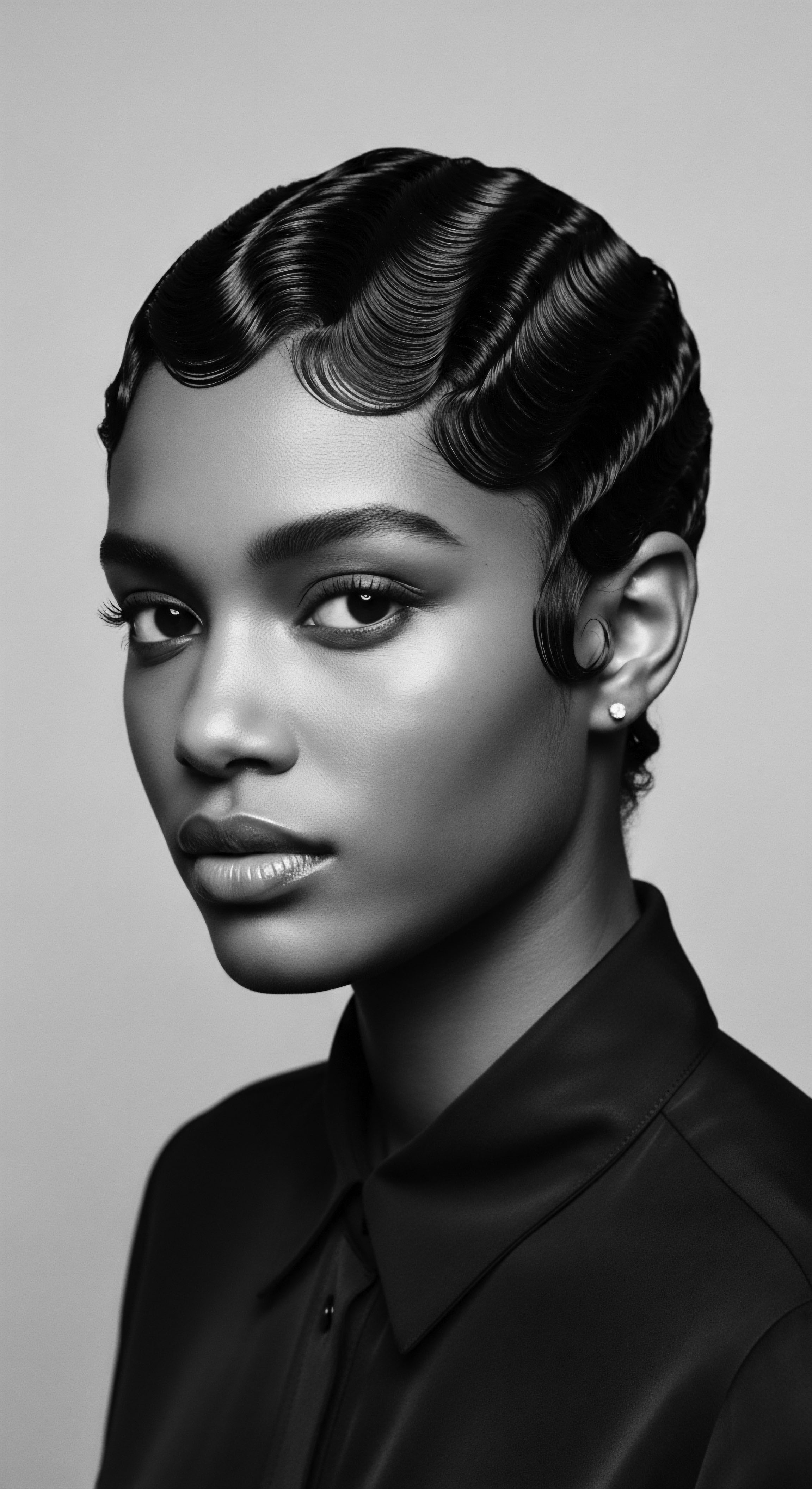
Intermediate
Moving beyond the foundational understanding, the intermediate interpretation of Beauty Standards, particularly for textured hair, requires a deeper examination of how these ideals were challenged and transformed through historical forces. The arrival of European colonizers and the subsequent transatlantic slave trade profoundly disrupted established African hair traditions, imposing a new, often brutal, definition of beauty. This period marked a significant shift, where Eurocentric aesthetics began to dominate, devaluing indigenous hair textures and promoting straight hair as the singular benchmark of attractiveness.
This imposition was not merely a matter of aesthetic preference; it was a calculated strategy of control and dehumanization. Enslaved Africans were often stripped of their traditional hairstyles, and their hair was pathologized, deemed “messy” or “unruly,” to justify their subjugation. The very act of caring for textured hair, which had been a communal and spiritual practice, became difficult or impossible under the harsh conditions of enslavement. This forced abandonment of ancestral hair rituals led to profound psychological and social consequences, contributing to an internalized sense of inferiority regarding natural hair.
The historical trajectory of Beauty Standards for textured hair illustrates a relentless effort to erase ancestral beauty, met with equally powerful acts of cultural reclamation and resistance.
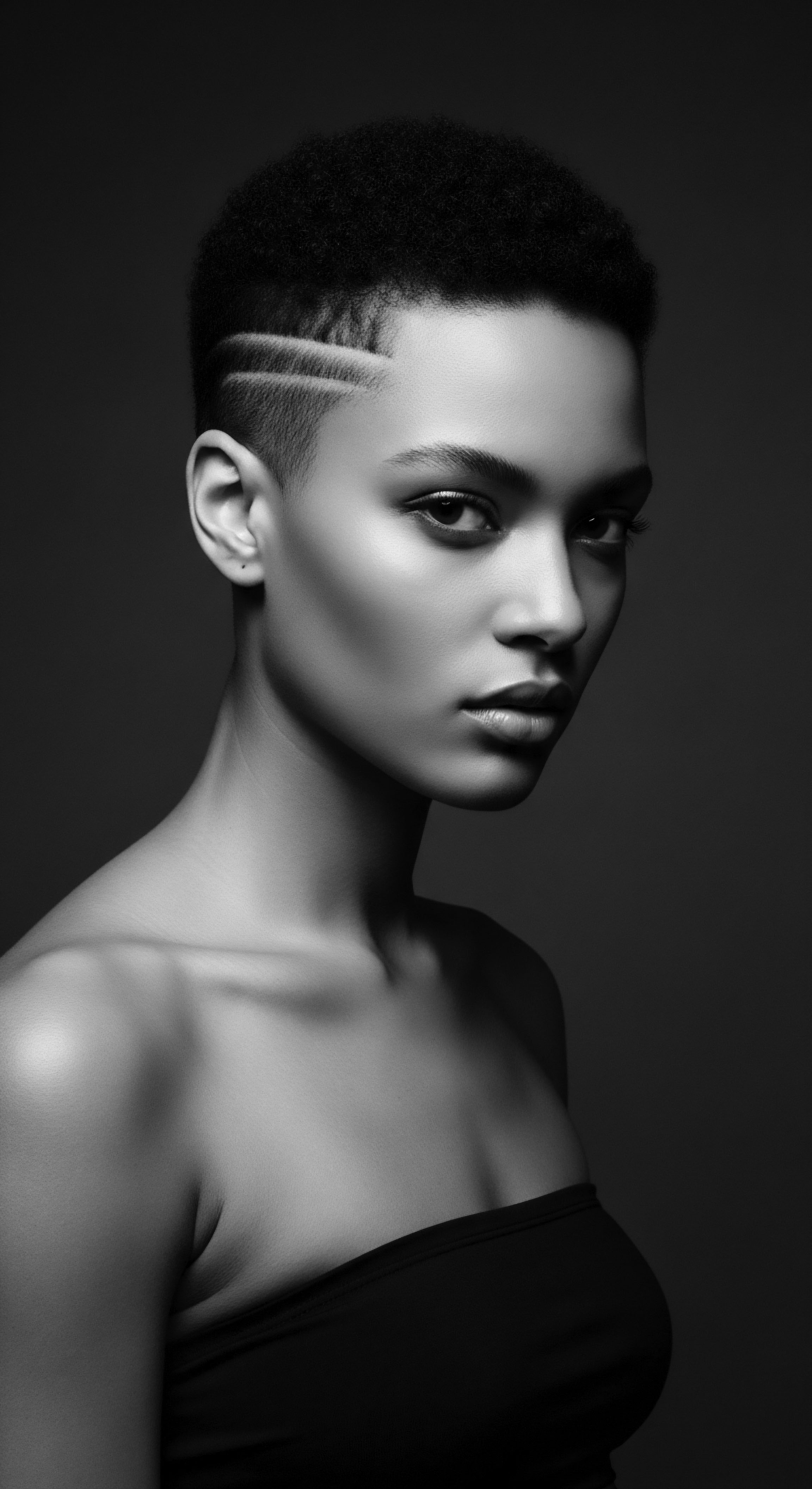
The Imposition of Eurocentric Ideals
The concept of “good hair” emerged during this era, defining hair that was straighter, softer, and more akin to European textures as desirable, while coily and kinky hair was deemed “bad.” This racialized hierarchy of beauty was not accidental; it was a deliberate tool to reinforce social stratification and racial subjugation. The commercialization of beauty products further solidified this bias, flooding the market with relaxers and straightening treatments designed to alter natural hair textures, encouraging conformity to mainstream, Eurocentric standards.
The psychological impact of these imposed standards cannot be overstated. Generations of Black women were socialized to believe that their natural hair was unprofessional or unattractive, leading to a continuous struggle to reconcile their inherent beauty with external societal pressures. This historical context is essential for understanding the ongoing challenges faced by individuals with textured hair in various social and professional settings, where subtle and overt forms of hair discrimination persist.

Case Study ❉ The Tignon Laws of Louisiana
A powerful historical example of this systemic oppression is found in the Tignon Laws enacted in Louisiana in 1786 by Spanish Governor Esteban Rodríguez Miró. These laws mandated that free Black women, particularly those of mixed heritage who often styled their hair elaborately, wear a tignon (a headscarf or handkerchief) to cover their hair in public. The intent was to diminish their perceived beauty, distinguish them from white women, and visually mark them as belonging to the slave class, regardless of their free status.
This legislative act was a direct response to the striking beauty and elegant hairstyles of free Creole women of color, which reportedly attracted white men and challenged the social order. However, in a remarkable act of defiance and creative resistance, these women transformed the oppressive mandate into a statement of identity and style. They used colorful, expensive fabrics, tying their tignons with ornate knots and adorning them with jewels and feathers, turning a symbol of subjugation into a mark of distinction and resilience.
This specific historical instance powerfully illuminates the Beauty Standards’ connection to textured hair heritage and Black experiences. It demonstrates how external forces sought to control and define Black beauty, yet simultaneously reveals the inherent strength and ingenuity of Black women in reclaiming their agency and redefining beauty on their own terms. The Tignon Laws, though no longer enforced, serve as a potent reminder of the enduring struggle against hair discrimination and the deep cultural significance of textured hair as a symbol of identity and resistance.
| Era/Influence Core Philosophy |
| Traditional African Practices (Pre-Colonial) Celebration of natural texture, spiritual connection, social communication, community bonding. |
| Colonial/Post-Slavery Influences Conformity to Eurocentric ideals, suppression of natural texture, association with social mobility. |
| Era/Influence Primary Ingredients/Tools |
| Traditional African Practices (Pre-Colonial) Natural butters, plant extracts, herbs, clays, wooden combs, communal hands. |
| Colonial/Post-Slavery Influences Chemical relaxers (lye-based), hot combs, pressing irons, synthetic oils. |
| Era/Influence Purpose of Styling |
| Traditional African Practices (Pre-Colonial) Express identity, status, spiritual beliefs, protect hair, facilitate community rituals. |
| Colonial/Post-Slavery Influences Achieve straightness, appear "professional," assimilate into dominant society, avoid discrimination. |
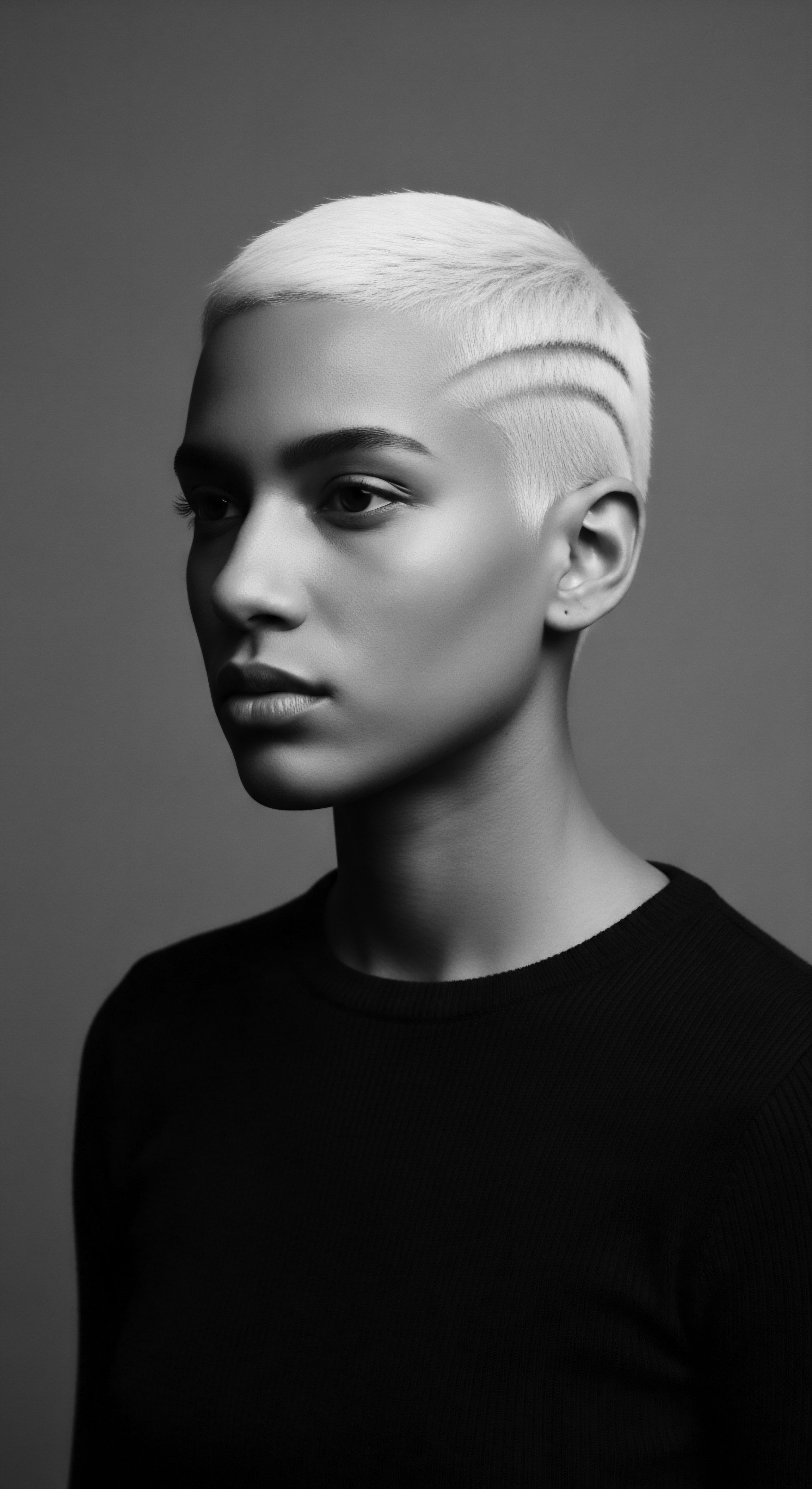
Academic
At an academic stratum, the Beauty Standards are precisely delineated as a complex socio-cultural construct, meticulously woven from prevailing aesthetic ideologies, historical power dynamics, and the commercial imperatives of a globalized economy. This conceptualization extends beyond mere physical appearance, encompassing a profound semiotic function wherein particular somatic presentations, especially hair, operate as potent signifiers of social value, professional competence, and even moral standing. For textured hair, this definition becomes particularly salient, as its historical trajectory has been profoundly shaped by racialized hierarchies that systematically devalued Afro-textured aesthetics in favor of Eurocentric prototypes. The meaning of Beauty Standards, therefore, is not an objective metric of attractiveness, but rather a dynamic, often contested, system of classification that has had tangible, long-term consequences for individuals and communities of African descent.
Scholarly inquiry into Beauty Standards, particularly concerning textured hair, reveals a persistent tension between intrinsic cultural valuation and extrinsic societal pressures. This tension is particularly evident in the psychological and sociological impacts of hair discrimination, where natural hair textures are frequently deemed “unprofessional” or “unpolished” in educational and occupational settings. Research consistently demonstrates that Black women, in particular, face systemic biases, often feeling compelled to alter their natural hair to conform to a dominant aesthetic that implicitly, or explicitly, privileges straight hair. (Duke University, 2020) This phenomenon underscores the enduring legacy of colonial beauty paradigms, where the very biology of textured hair became a site of racialized judgment and social control.
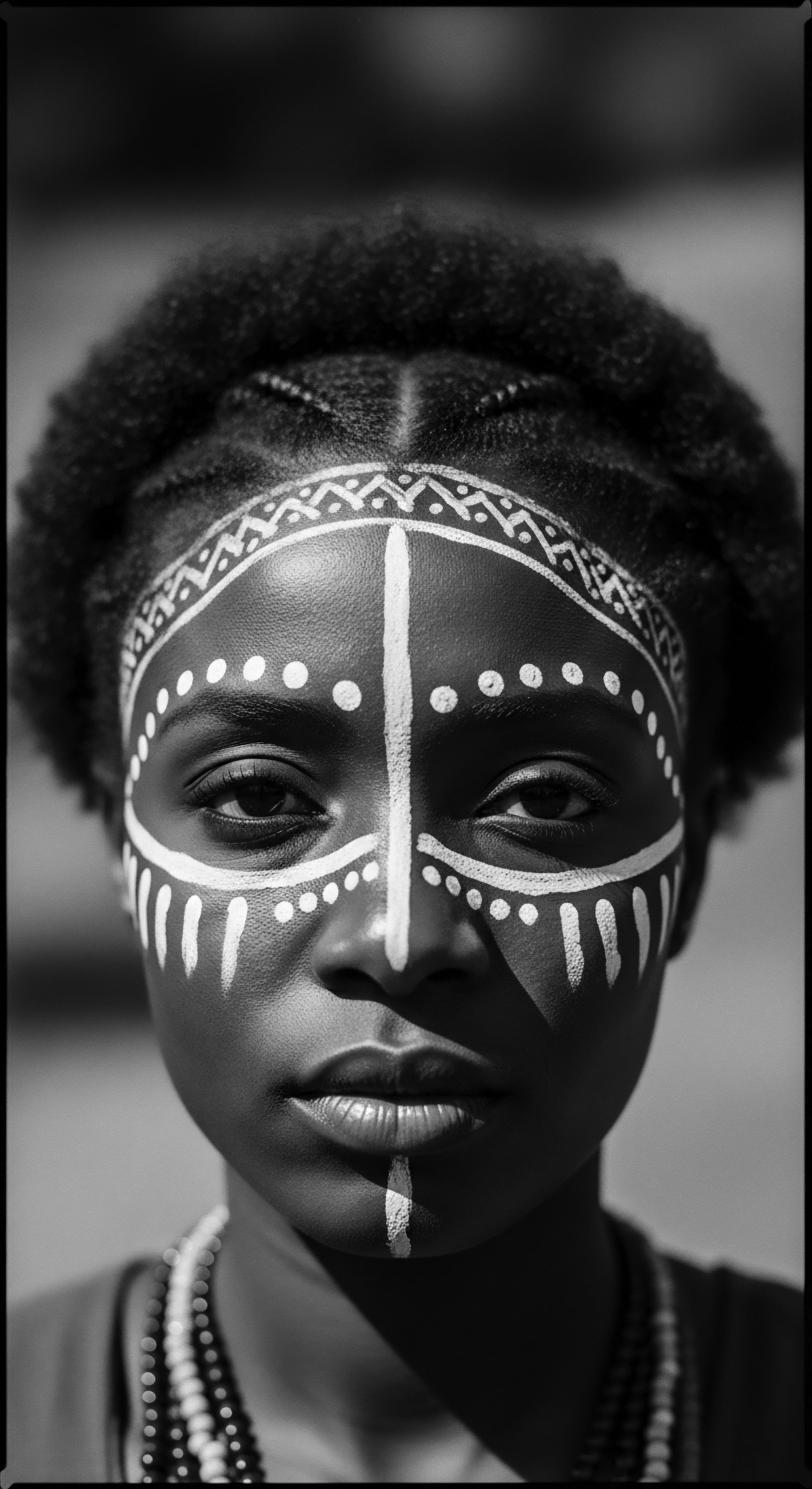
The Biopolitics of Hair ❉ Control and Resistance
The academic lens permits a deep analysis of the biopolitical dimensions of Beauty Standards, where the regulation of hair serves as a mechanism for governing bodies and identities. Historically, this has manifested through various forms of control, from legislative acts like the Tignon Laws to the pervasive influence of media and advertising. These mechanisms collectively operate to normalize a particular aesthetic, rendering alternative forms of beauty as deviant or undesirable. The economic implications are also substantial, with a significant market dedicated to products designed to alter textured hair, often containing hazardous chemicals that disproportionately affect Black women’s health.
Yet, within this framework of control, acts of resistance and reclamation have continuously emerged, transforming hair into a powerful symbol of defiance and self-determination. The natural hair movement, spanning multiple historical waves, represents a profound counter-narrative, asserting the inherent beauty and cultural richness of textured hair. This movement is not merely a stylistic preference; it is a political and psychological declaration of autonomy, challenging the very foundations of Eurocentric beauty hegemony.

Ancestral Wisdom and Modern Science ❉ A Confluence of Care
An academic exploration of Beauty Standards also necessitates a nuanced understanding of traditional hair care practices, often dismissed as anecdotal, but increasingly validated by modern scientific inquiry. Ancient African ethnobotanical knowledge, for instance, employed a diverse array of plant-based ingredients for hair health, focusing on moisture, strength, and scalp vitality. These practices, passed down through generations, demonstrate an empirical understanding of textured hair’s unique structural and physiological needs.
For instance, studies in ethnobotany highlight numerous African plants traditionally used for hair treatment and care, many of which exhibit properties relevant to modern hair science. Research indicates that out of 68 plants identified as African treatments for alopecia, dandruff, lice, and tinea, 30 have associated research focusing on hair growth and general hair care, investigating mechanisms like 5α-reductase inhibition or effects on the hair growth cycle. (Mouchane et al. 2024) This scientific validation of ancestral wisdom underscores the profound, often overlooked, efficacy of traditional practices in fostering hair health.
This deeper understanding allows for a re-evaluation of Beauty Standards, shifting the focus from a prescriptive ideal to a celebration of inherent hair characteristics and the diverse, culturally rich practices that support them. It prompts a critical examination of the systems that have historically marginalized textured hair, while simultaneously recognizing the agency and resilience of communities who continue to define beauty on their own terms.
The interplay between historical oppression and contemporary resilience in the realm of textured hair care provides a rich area for academic discourse. The psychological toll of conforming to Eurocentric beauty standards, coupled with the health risks associated with chemical treatments, highlights the urgent need for a paradigm shift in how beauty is perceived and promoted. The assertion of natural hair, therefore, is not merely a personal choice but a deeply political act, rooted in a collective ancestral memory and a vision for a more inclusive future.
- Devaluation of Natural Texture ❉ Historically, Eurocentric beauty standards positioned tightly coiled or kinky hair as “bad” or “unprofessional,” creating an internalized sense of inferiority within Black communities.
- Health Disparities from Chemical Treatments ❉ The pressure to straighten hair led to widespread use of chemical relaxers, many of which contained hazardous ingredients linked to significant health issues, including reproductive problems and cancer.
- Hair as a Site of Resistance ❉ From the Tignon Laws to the modern natural hair movement, textured hair has consistently served as a powerful symbol of cultural identity, pride, and resistance against oppressive beauty norms.
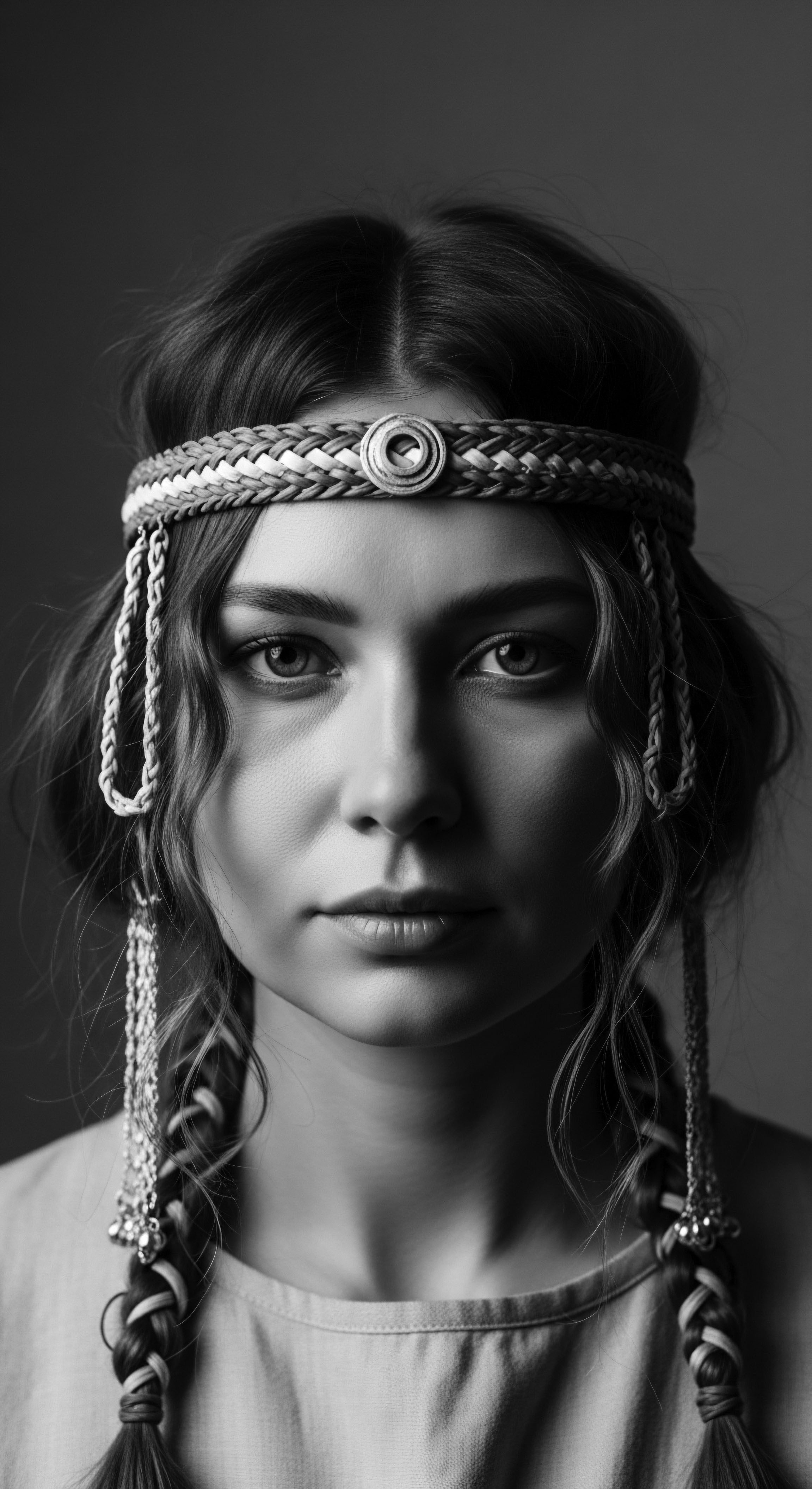
The Sociology of Hair and Identity
Sociological perspectives further clarify that hair is not merely a biological appendage but a social construct, imbued with meanings that shape identity and social interactions. For Black individuals, hair is often referred to as “the crown,” a symbol of pride, creativity, spirituality, and connection to ancestry. The ongoing politicization of Black hair means that messages about its “unruliness” or “unprofessionalism” are not simply aesthetic judgments but assertions about belonging and self-worth.
The academic meaning of Beauty Standards thus becomes a critical lens through which to examine systemic discrimination, the resilience of cultural heritage, and the ongoing efforts to redefine beauty in a way that honors all hair textures. It calls for a deeper appreciation of the wisdom embedded in ancestral practices and a recognition of the profound connections between hair, identity, and collective well-being.
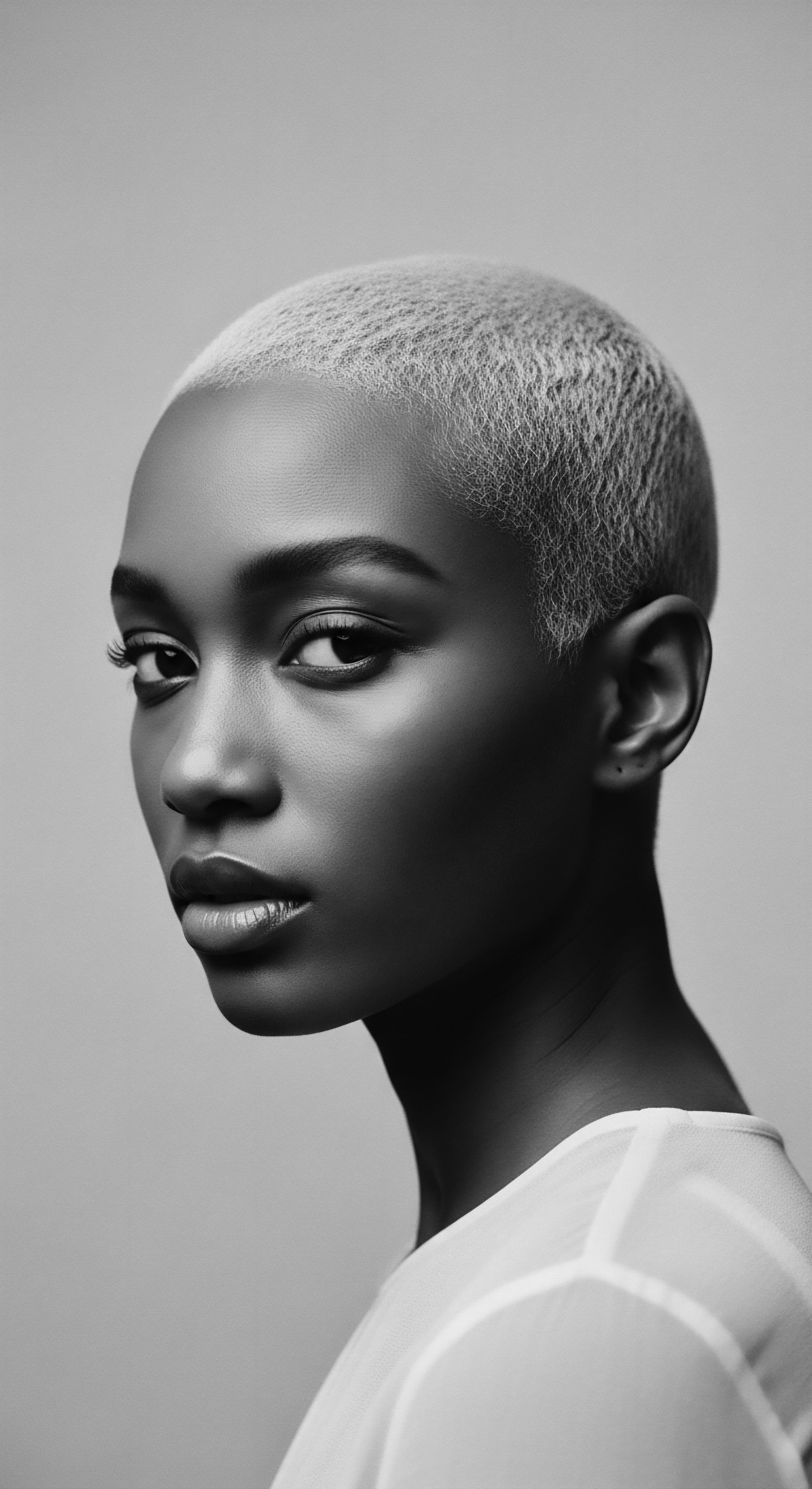
Reflection on the Heritage of Beauty Standards
The journey through the intricate landscape of Beauty Standards, particularly as they pertain to textured hair, reveals a profound narrative of enduring heritage and evolving significance. From the elemental biology of coils and kinks, designed by nature for protection and resilience, to the ancient practices that celebrated every strand as a conduit to the divine, the story of textured hair is one of inherent grace. This lineage of care, deeply rooted in ancestral wisdom, speaks to a time when beauty was not a narrow ideal to be pursued but an authentic expression of self and community, a visible testament to one’s place within the vibrant tapestry of life. The earliest echoes from the source whisper of a holistic understanding, where hair care rituals were communal acts, reinforcing bonds and passing down generations of knowledge, a tender thread connecting past to present.
Yet, this reflection also acknowledges the historical shadows that sought to dim this innate radiance. The imposition of Eurocentric ideals, often enforced through legislation and societal pressure, attempted to sever the profound connection between textured hair and its heritage. This period of subjugation, however, did not extinguish the flame of ancestral wisdom.
Instead, it ignited a powerful spirit of resistance, transforming hair into a symbol of defiance, a quiet rebellion against imposed norms. The resilience of Black and mixed-race communities in maintaining their traditional styles, adapting them, and ultimately reclaiming them, stands as a testament to an unbound helix of identity, twisting and turning through history but never breaking.
Today, as we witness a resurgence of pride in natural textures, the reflection on Beauty Standards is more than an academic exercise; it is an invitation to heal, to remember, and to honor. It is about recognizing that the “Soul of a Strand” is not just a metaphor; it is the living essence of ancestral memory, carried forward in every curl, every twist, every loc. This ongoing redefinition of beauty, driven by a deep reverence for heritage, allows us to appreciate the ingenuity of those who came before us and to build a future where every hair texture is celebrated for its unique splendor. It is a continuous conversation between ancient practices and modern understanding, ensuring that the legacy of textured hair remains a beacon of strength, beauty, and unwavering identity for generations to come.
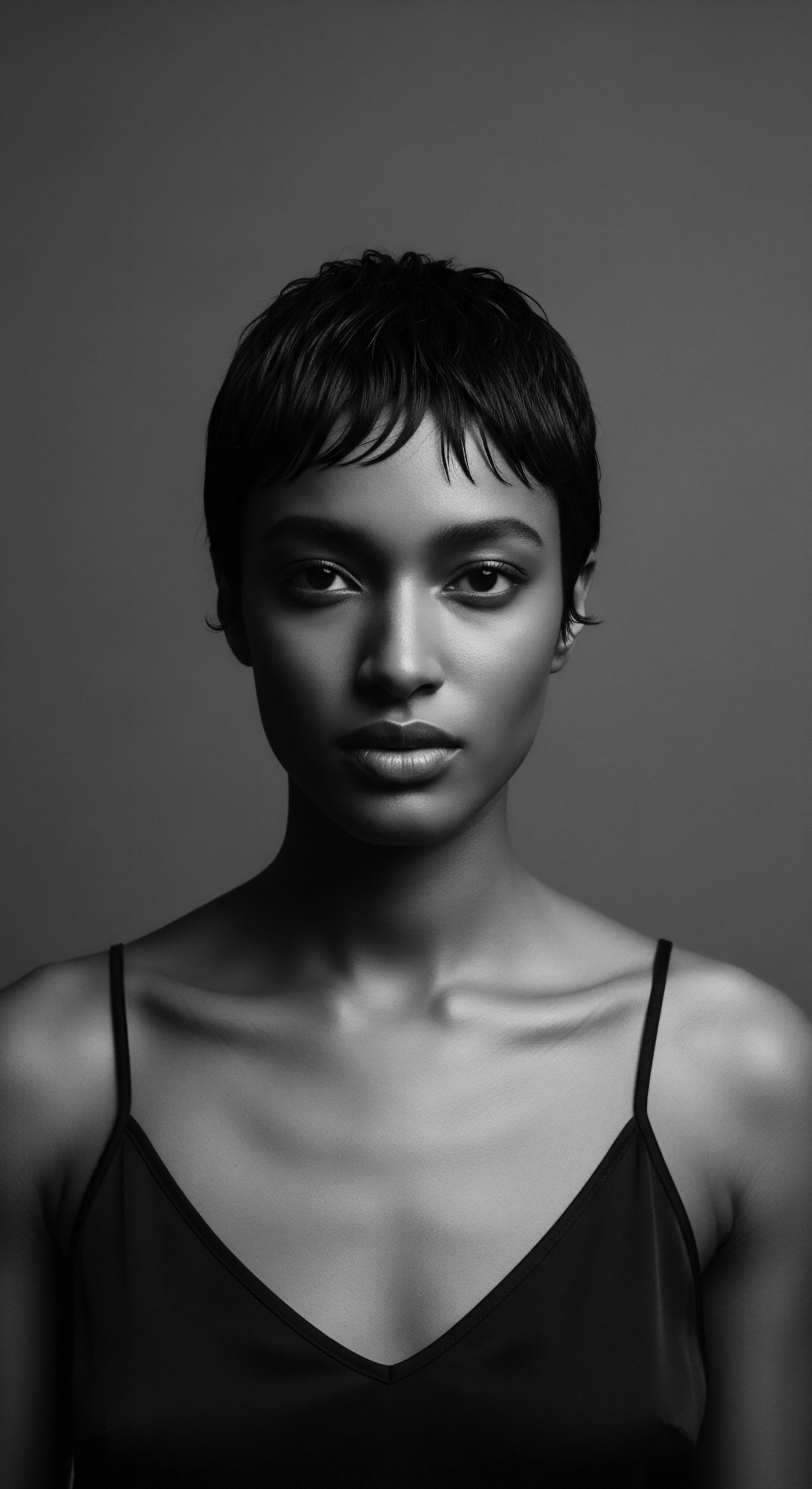
References
- Awad, G. H. Norwood, R. A. & Mbilishaka, A. (2015). Beauty and Body Image Concerns Among African American College Women. Journal of Black Psychology, 41(3), 220–240.
- Byrd, A. D. & Tharps, L. D. (2001). Hair Story ❉ Untangling the Roots of Black Hair in America. St. Martin’s Press.
- Ellington, T. (2022). Natural Hair. In Textures ❉ The History and Art of Black Hair. Kent State University Press.
- Hunter, M. L. (2011). Buying Beauty ❉ The Ethnic Beauty Industry’s Consumption of Women of Color. Rowman & Littlefield Publishers.
- Kimbell, R. (2005). My Nappy Roots ❉ A Journey Through Black Hair-itage. One Village Entertainment.
- Mbilishaka, A. (2023). Beyond the roots ❉ exploring the link between black hair and mental health. ResearchGate .
- Mouchane, M. Taybi, H. Gouitaa, N. & Assem, N. (2024). Ethnobotanical Survey of Medicinal Plants used in the Treatment and Care of Hair in Karia ba Mohamed (Northern Morocco). Journal of Medicinal Plants Research, 18(2), 53-63.
- Patton, T. O. (2006). Hey Girl, Am I More Than My Hair? African American Women and Their Struggles with Beauty, Body Image, and Hair. Black Women, Gender & Families, 1(2), 27-41.
- Robinson, M. L. (2011). Black Hair, Beauty, and the Power of the Afro. Routledge.
- Rowe, K. D. (2018). On Decolonization, Beauty, and Black Hair Aesthetics. African American Intellectual History Society (AAIHS) Blog .
- Tharps, L. D. (2014). Afro-textured hair ❉ A history. The African American Policy Forum.
